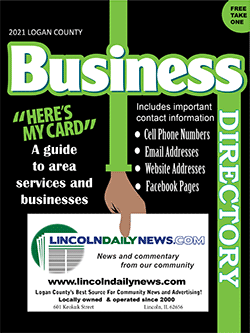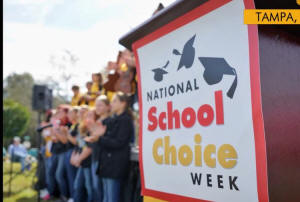|
Op-Ed:
Rural families need educational choice too
[The Center Square] Jason Edmonds |
RealClearWire
This school year started
unlike any other for children across the country, many of whom began the
year staring at a computer screen. Yet for the minority of students who
were able to start the year at an independent school, their education
was minimally impacted, with most continuing with in-person classes.
Itís unfortunate that some students are being forced to go virtual for
their education, with some public school districts refusing to reopen
classrooms until the beginning of the next school year. Whatís even more
unfortunate is the reason for these decisions to keep classrooms closed
may not be based on safety and science but sheer political influence. |
|
 Through a Freedom of Information Act request sent to the U.S.
Centers for Disease Control and Prevention (CDC), the requesting organization,
Americans for Public Trust, uncovered that schools' continued shutdowns were
influenced by union leadership at the American Federation for Teachers. Far from
caring for students' education and wellbeing, the union pushed back against the
CDCís recommendations to reopen schools even with study after study proving
students attending in-person classes were far less likely to catch or transmit
COVID-19. A control case of Mississippi students found ďthat having attended
gatherings and social functions outside the home as well as having had visitors
in the home was associated with increased risk of infection; however, in-person
school attendance during the 14 days prior to diagnosis was not.Ē Through a Freedom of Information Act request sent to the U.S.
Centers for Disease Control and Prevention (CDC), the requesting organization,
Americans for Public Trust, uncovered that schools' continued shutdowns were
influenced by union leadership at the American Federation for Teachers. Far from
caring for students' education and wellbeing, the union pushed back against the
CDCís recommendations to reopen schools even with study after study proving
students attending in-person classes were far less likely to catch or transmit
COVID-19. A control case of Mississippi students found ďthat having attended
gatherings and social functions outside the home as well as having had visitors
in the home was associated with increased risk of infection; however, in-person
school attendance during the 14 days prior to diagnosis was not.Ē

Whether it was the curriculum of virtual schooling, difficulties with online
education, or the need for social interaction, public school parents began to
look for alternatives to educating their children outside of their zoned public
school. This led to an explosion of homeschooling with the Census Bureau
reporting that homeschool enrollment more than doubled during this past school
year. In addition to homeschooling, learning pods and microschools grew in
popularity, as these innovative education models give parents customizable and
flexible options to offer their child an education that fits his or her needs.
An EdChoice survey from September 2020 showed 35 percent of respondents
participating in a learning pod and another 18 percent looking to join one. This
wave of change and innovation across the education landscape didnít end in
families' homes. Soon legislators across the country began introducing
educational choice legislation at levels that had never been seen before. Just
this year alone, legislators in 30 states have introduced over 50 pieces of
educational choice legislation. As a result, numerous states have created new
educational choice programs or expanded their current ones.
[ to
top of second column] |

Image courtesy of National School Choice Week video

Innovative education models and returning control
to families have begun to significantly transform K-12 education.
Arguably, these changes will benefit rural students the most, who
have struggled with fewer educational options compared to their
urban peers. Unlike families in urban areas, which in many cases
have a private, charter, or alternative public school nearby, rural
students are usually left with no choice outside of their zoned
public school. In many rural areas, with no other public or private
options within reach, rural students have struggled to obtain
significant educational freedom. Instead, they have been handed a
take-it-or-leave-it education due to the lack of options. But with
the rise in innovative models like learning pods and microschools,
along with the increase in educational freedom legislation, rural
students across America are finally in a position to get an
education that fits their unique needs.
With educational choice legislation at record levels, legislators
should remember rural students when crafting their bills. Though any
educational freedom program is a step in the right direction to
giving parents a choice in their child's education, there are
programs, such as Tennesseeís Educational Savings Account program
passed in 2019, that only apply to certain areas of the state.
Lawmakers can look to the bold example set by West Virginia, which
recently passed the most expansive Education Savings Account program
in the nation, offering educational freedom across the state, for
all students, regardless of their location.
Itís easy to see that the expansion of educational
choice programs is a direct response to the problem of funding
school systems over the students. Should a school be unable to meet
the needs of a student, families should be able to use those
educational funds for any educational option that actually meets the
needs of their child. With a recent Real Clear Opinion Research
survey showing 71 percent of parents supporting school choice, it's
obvious that after more than a year of witnessing the public school
system fail, more and more parents now see the value in having a
choice when it comes to their childís education.
Jason Edmonds is a research associate at the Beacon Center of
Tennessee.
Click here to respond to the editor about this article |